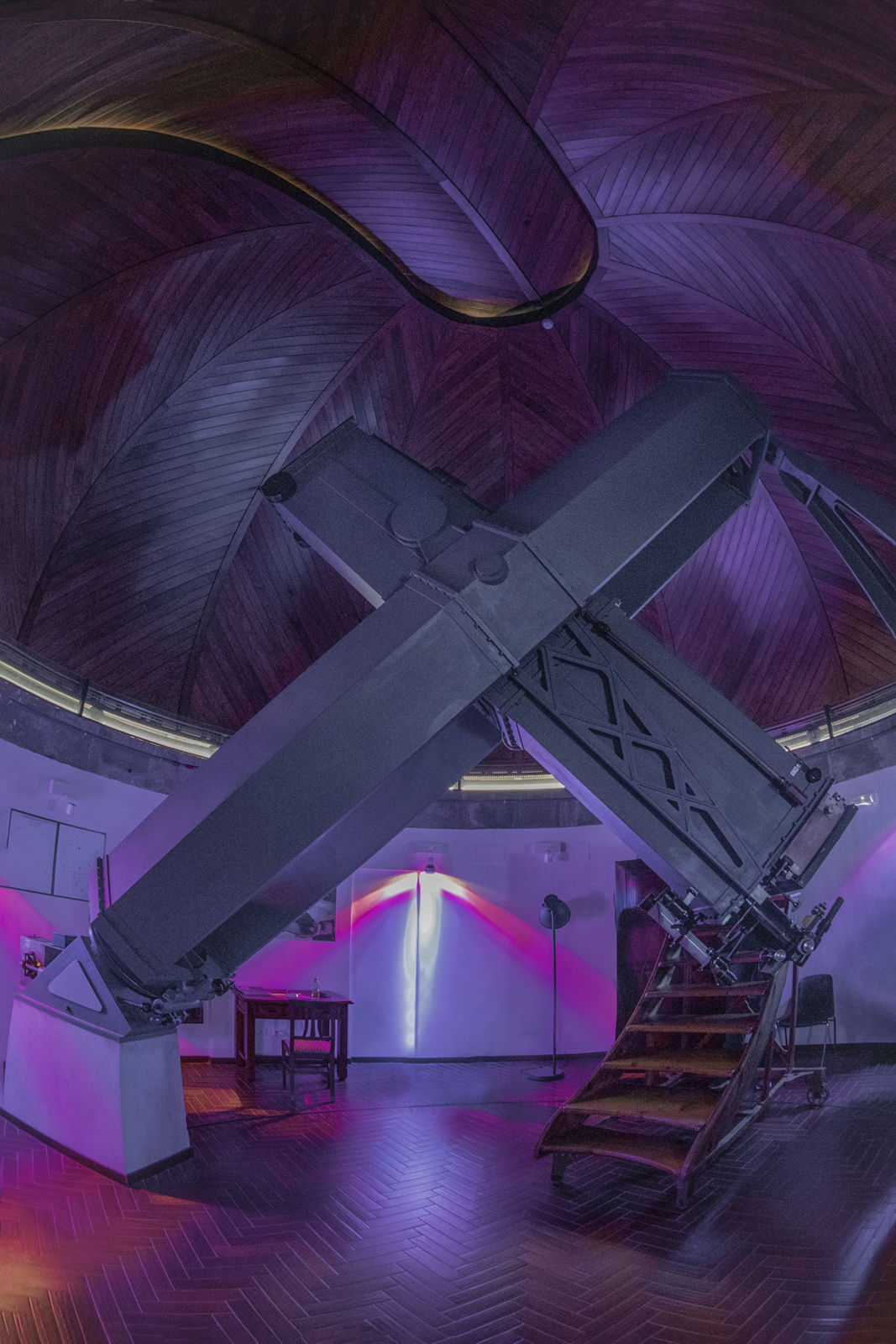 |
| Al di la della Luna; Beyond the Moon; Astrophotography; Astrofotografia; Danilo Pivato |
Carte du Ciel Telescope
The Carte du Ciel Telescope is certainly the most famous and prestigious instrument of the Vatican Observatory. The telescope was originally on the walls of the Vatican. It was moved to Castel Gandolfo in 1942. And it was recently restored to full working order! The Carte du Ciel telescope is not a particularly large telescope. It was not even large for its time; it was built for a particular purpose (it has that box-shaped tube because two parallel telescopes are housed within it), not for size. But it gives nice images, and it is really fun to use.
The Vatican Observatory was given its swath of the sky to map between the parallels of +55 and +64 deg. The Paris agreements provided that all of the eighteen observatories participating in the Carte du Ciel would obtain instruments that had the same characteristics so that a perfect homogeneity of the results would be assured. The characteristics of the objective gave, on a photographic plate 16cm square, a useful field 13cm square, equivalent to two degrees on the sky, about four times the diameter of the moon. The scale, therefore, was about 1 arc-minute/mm. The photographic equatorial telescope and the rotating eight meter dome, constructed at Paris in the Gilon workshops, were set in place on the Leonine Tower in 1891, close to the present-day location of the Vatican heliport and known today as the Torre S. Giovanni (St. John’s Tower). It has walls a good four and a half meters thick and is one of the few bastions still standing of the fortification which was called “leonina” because Saint Leo IV had it built in 840 as a defense against the Saracen invasions. The telescope was moved to the summer gardens of Castel Gandolfo in 1942; the final plates for this project were taken in 1953. Mounting: English mounting Inauguration: Moved from The Vatican to Castel Gandolfo,was newly inaugura-ted in 1942. Refractor: Double refractor Astrograph: aperture 33cm; Focal l. 343cm:: Photograpic plate 13x13cm Collimator: Aperture 20cm Focal l. 36 cm Vatican Observatory 2025.09.27
|
|
|
Photo: Danilo Pivato © Copyright: - Images & texts 2025 - All rights reserved

